Dateline – September 2021 – Lewisville, Texas
This will be a brief post to document an especially large Guinea Paper Wasp nest that I came across on the grounds a sports complex located in Lewisville, Texas…
The nest was found lying on a concrete pad under a vinyl awning. The nest had been hanging from a high spot on the awning’s framework, but for some reason the attachment point had failed, causing the entire nest to fall to the ground.
The wasp’s nest landed so that the cell access side was facing down. In this position the adult wasps could not reach the hungry larvae growing inside. Nonetheless, the vast majority of the worker wasp had gathered on the fallen nest in an instinct driven attempt to carry on. Despite their best efforts, they would not be able to save their brood.
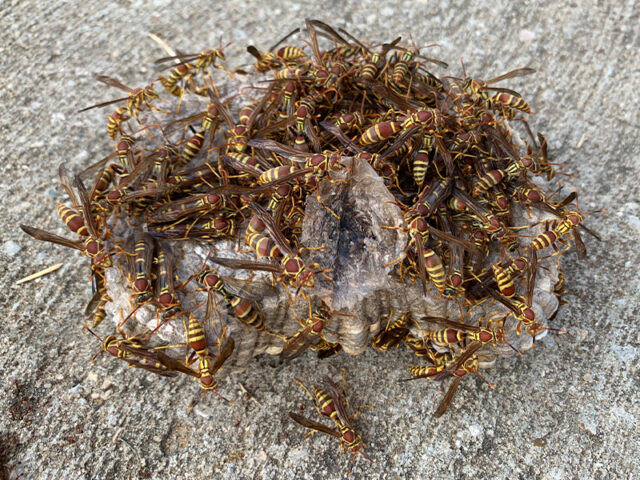
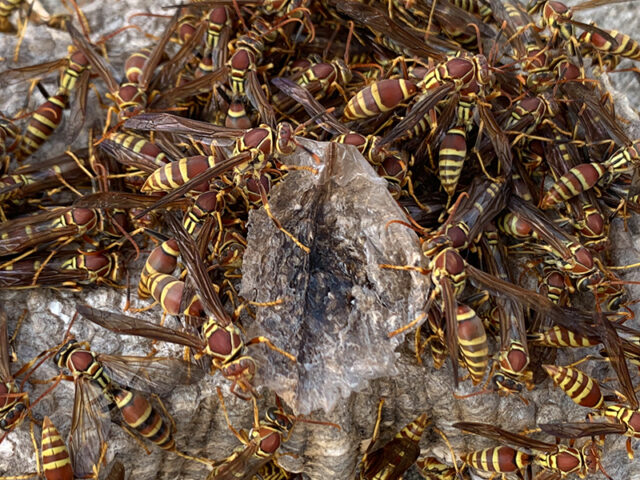
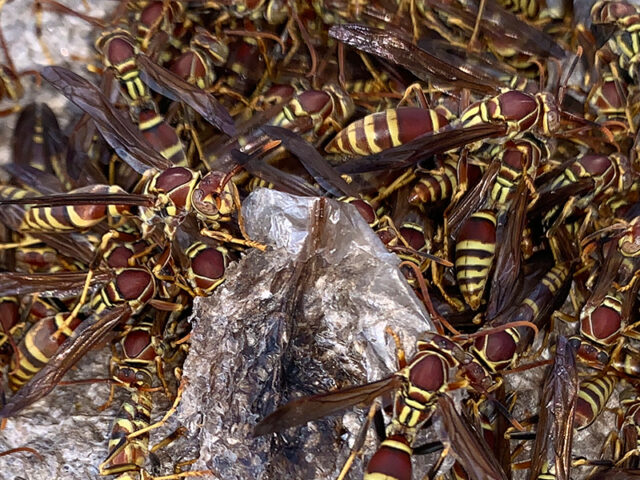

Paper wasp nests—as the name implies—are constructed from paper produced by the wasps. They do this by finding a suitable piece of wood to chew into pulp. They carry the masticated wood back to the nest site, and use resulting pulp to construct additions to the paper nest.
I had my introduction to this process one summer day when I was just a kid. I can recall noticing a soft crunch-crunch-crunch noise coming from somewhere in my backyard. As I worked to track down the source of the strange sound, I finally came across a big red wasp clinging to the underside of one of our fence rails. As I watched, the wasp worked her way along the edge of this board, chewing away a small portion of the wood as she went. She flew away only a short time later, surely headed back to her nest to contributed her freshly collected wood pulp.
Nest construction is begun each season by a single queen wasp. The queen will build the first few cells of the nest, and into these newly created cells she will lay her initial set of eggs. When the eggs hatch, the queen alone takes on the responsibility of feeding the hungry larvae. When the larvae grow large to fill the entire cell, they cover the opening with silk, and retire to pupate. A short time later, this brood will emerge as adult worker wasps. The entire process takes around 45 days.
The new adult workers will then take over the duties of nest expansion and larval care from the queen. The size of the nest will quickly grow as more and more worker wasps reach adulthood. Over the course of a season, a nest like this one can become quite large.
And, it may have been the large size of this nest that ultimately caused its attachment stalk to fail. A clear case of losing by winning. Surely, the adhesive lost its grip on the smooth finish of the metal framework once the nest had grown large and heavy enough to stress the attachment.
On the ground, the bulk of the adults wasps stayed with the nest for most of the first day. But by the next morning the nest had been abandoned, and the wasps had all returned to the spot on the awning’s framework where the nest had previously hung. The intrepid wasps had already begun construction on a new nest, and as you can see in some of the pictures below, eggs had been laid in the available cells.
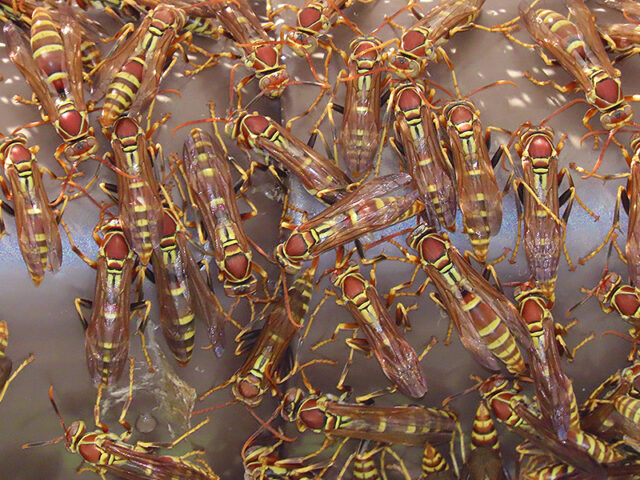
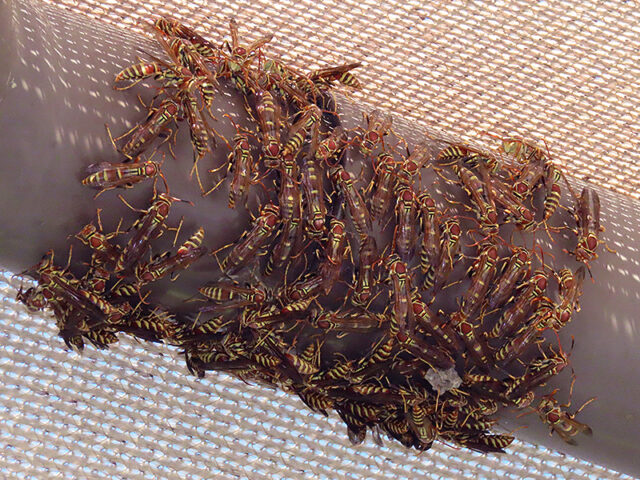

A few days after these pictures were taken, I stopped by the park again. The new nest was still in operation, and the number of cells had continued to increase. But the number of adult workers had declined significantly in the interim. The number present at this time, was just enough to manage the reduced workload. It is not clear what happened to the balance of the wasps, but I suspect that without having room to contribute around the small new nest, the unneeded workers simply expired.
UPDATE
Stopping by again a few weeks later, I found all signs of the wasps and their nest long gone. It appears that at some point park maintenance took notice of the wasps, and removed them and their newly reconstituted nest for good.



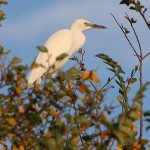
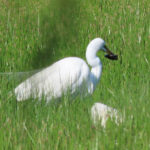

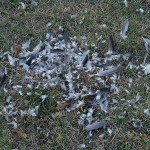
which one is the queen?
I don’t think they’ll be able to tell you. From what I’ve read (https://en.wikipedia.org/wiki/Polistes_exclamans) there’s really no different appearance between the queen and the workers, and if the queen leaves/dies one of the senior workers will replace her as queen.